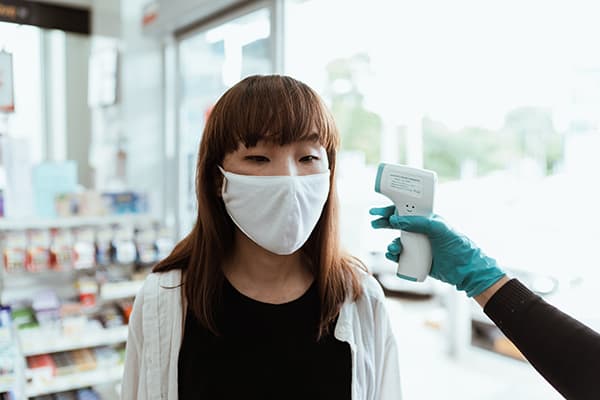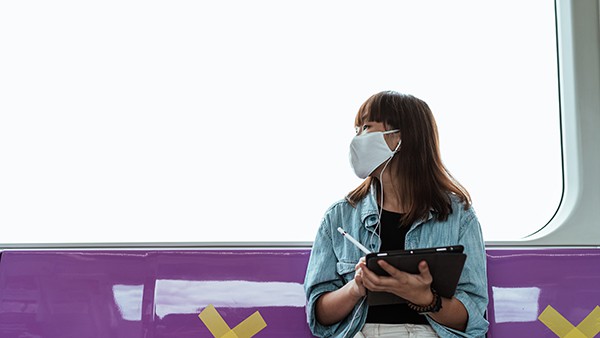It’s been making news since the early part of this year and it has affected all of our lives in one way or the other. Indeed, COVID-19 has made its mark in the world, and up to this day, it still continues to instill uncertainties and worry amongst the nations. You may have known of someone who was afflicted with the virus, a family, a friend, a colleague, etc. And out of all these cases, one thing is always absolute; it takes a lot to survive. It takes a lot to survive a virus which has only made its presence felt within the latter months of the previous year until its booming infamy in the early months of this year. And until now, we can feel its effect, not only through the stories of those who’ve lost loved ones due to the virus, but also through those who’ve lost their livelihood due to the recent lockdowns and region-wide quarantine protocols. It’s as if the world stood still for a few months, and indeed, it has, as people were stuck within their homes, praying for an immediate outcome or resolution to the nightmare that is COVID-19.
With all of that being said, you may be urging to know more about this virus, its point of origin, and where we stand as Filipinos amidst this current pandemic, and for that you no longer have to look far, as we’ve prepared a couple of notable occurrences within the whole ordeal. Keep in mind that these occurrences have since been updated, with recurring results and the ever-rising number of positive cases, so feel free to compare the data with your local news and social media pages.
Where did COVID-19 originate?
According to a few online sources, “last December 31, 2019, a clustering of pneumonia cases of unknown etiology in Wuhan, China was reported to the WHO Country Office. The outbreak was later determined to be caused by a new coronavirus strain that has not been previously identified in humans.” As of this writing, no one knows who patient zero (a term that refers to the very first person to be infected with a disease) is or how he or she even got infected. There were a couple of information, citing its main origin from bats, and yes, that is indeed true. To further clarify, research has concluded that the lineage from which SARS-CoV-2 came has been circulating among bats for decades. Yes, you’ve read that right, decades. The researchers found that the virus which causes COVID-19 diverged from other bat viruses about 40-70 years ago. Apparently, SARS-CoV-2 is likely to include other viruses with the ability to infect humans. They also warn it likely includes other viruses with the ability to infect humans. Now, it’s easy to criticize these researchers for not acting fast enough to control the spread of the virus, but keep in mind that this is a very new strain, and no one even had the idea how big it would get, not until it was already too late. Even the topic of “Where did the virus really come from?” is a touchy subject that no government from around the world would push to pursue, just to avoid conflict within the already gloomy-atmosphere.
When did COVID-19 first reach the Philippines?
On January 30, 2020, the Philippine Department of Health reported the first case of COVID-19 in the country with a 38-year-old female Chinese national. On 7 March, the first local transmission of COVID-19 was confirmed. Just like the other countries around the globe, everyone was caught off guard. Yes, there’s been news of this virus making the airwaves since the latter part of 2019, but no one could have prepared for the quick transmission of the virus, neither did anyone anticipate the virus to reach their countries, let alone the Philippines.
Were people complacent all along?
No. A very big no! Remember SARS? This virus made the headlines a couple of years ago, but while it may have shaken people a bit, back then, it didn’t even spread across the globe. So perhaps, with COVID-19, people had the same perception towards the new virus that we now know as COVID-19. Everyone might have thought that COVID-19 (which coincidentally is also a strain of SARS) may just die down along the way, a footnote that would just occur within China, and nowhere else.

What has the government done so far to limit the spread of the virus?
Since its first few months of infamy within the Philippine islands, there have been countless lockdowns, GCQ, MECQ, ECQ, and MGCQ implementations done within the various regions of the country. The LGUs have also sprang into action, providing countless assistance and guidance towards the communities whose lives have been affected by the pandemic, and if you want to get too technical, yes, almost everyone’s lives have been turned upside down by the virus. You or a family member may have been safe from the infection, but your employment status may be the casualty of the current situation. People lost their businesses, their customers, their livelihood, all of the things that bought food to their table, and sadly, most of them haven’t recovered yet from bankruptcy as of this writing. Many stores shut down, many employees lost their jobs, and for those who were able to continue with their work, the commute towards their morning schedules proved to be too tasking, so much so, that many companies decided on a work-from-home setting. They are at least able to recuperate than the others.
Has there been a cure or a vaccine developed to fight against the virus?
As of writing time, no, there hasn’t been any cure or vaccine yet, or at least the right formula hasn’t been made or found yet by the ongoing trials. To say the least, the WHO (World Health Organization) has made it clear that they are doing everything they can and are coordinating with all the countries around the world to come up with a cure that can finally eradicate COVID-19.
Is there anything we can do to stay safe, aside from the usual protocols?
Well, aside from social distancing, wearing a mask and face shield, and bringing along disinfecting solutions whenever going outdoors, the most efficient way to avoid getting the virus would still be to stay at home. Many companies and establishments are even implementing online solutions, so that you could still manage your outdoor transactions within the confines of your home. One main example of this would be Cebuana Lhuillier’s Cebuana from Home app. Now you can do local remittances, register and pay for insurance and other billing obligations, and pawn off items with an app that has it all. You may check out https://remitfromhome.cebuanalhuillier.com/Home/Services for more information.

